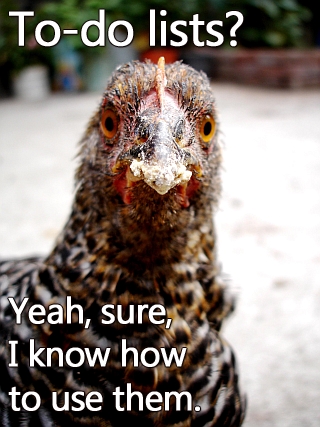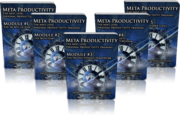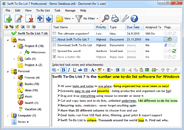 Everybody knows what a to-do list is.
Everybody knows what a to-do list is.
Almost everybody uses a to-do list, too. (At least occasionally, if not regularly).
But almost none asks: “Hey, how should I actually use a to-do list?”
I think that might be a big mistake.
There are intelligent ways of using to-do lists, and not-so-smart ways.
By using a to-do list the right way, you can eliminate forgetting, stress, overwhelm, procrastination. In fact, you can increase your productivity and efficiency. Tremendously. You can feel like you are in control.
On the other hand, by using to-do lists in not-so-smart-way, you can achieve the exact opposite.
More stress, anyone?
Today, we are going to learn how to use a to-do list intelligently. It’s dirt-simple, and once you implement it, it feels just great.
How to use a to-do list in an intelligent way
Using a to-do list intelligently is deceitfully simple.
This is what you need to do:
- Create the to-do list and do the initial dump, placing all your “stuff” into it. This clears your mind.
- (continuously): Look at your to-do list, see what’s next, work on it.
» Whenever you get interrupted or distracted, repeat.
» Whenever you finish a task, repeat. - (continuously): Whenever a new idea or task comes to you, write it down immediately into your to-do list, then proceed with what you were doing before.
That’s all.
It is ridiculously simple, isn’t it?
And yet, very few people have actually really mastered this.
If you look at the instructions, they simply say to create a to-list list with all your current stuff, look at it often (whenever you get interrupted, distracted, or finish something), and always write new stuff into it immediately when it comes to you.
These simple habits can change your life.
Since these are habits, it takes time to fully establish them. But once you ingrain them, you will do them automatically.
Do this for 2-3 weeks, and you will be doing it automatically, without even having to think about it.
At any point, you either want to be working on a task, looking what to do next, writing down/organizing your stuff, or truly relaxing.
This might be the best well-kept hidden secret of productivity.
With these habits, it’s easy. But without these habits you will spend most of your time in a gray-zone, not really doing anything. Since you’ve read this far, I bet you don’t want that.
How could you start using this intelligent to-do list approach today?





